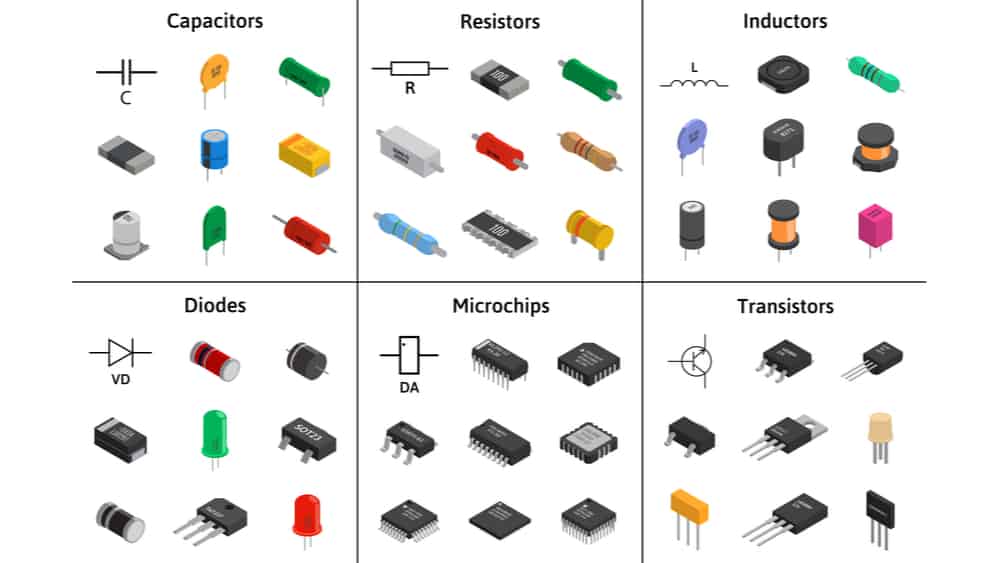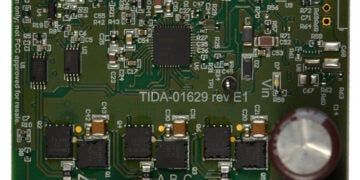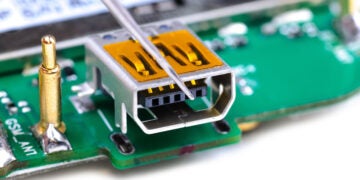
Power electronics is all about imagining the flow of invisible current behind a closed circuit consisting of several connected components. In this regard, we often come across various electronic components while designing a board, such as a resistor, capacitor, transistors, etc.
Each component has some unique functions and may offer more when combined with other components. However, for a new design engineer, understanding the presence of the most common electronic components is sufficient to get started with any complex circuit diagram with ease.
8 Most Common Electronic Components and Their Importance
Resistors Control Currents
A resistor offers electrical resistance to the flow of current. The resistivity to the current flow can be adjusted depending on its value, measured in ohms. The higher the value, the higher the resistance, and the lower the current flow through the circuit.
Several resistors can either be connected in series or parallel to decrease or increase the voltage drop across the circuit to achieve several functions.
Unique functions:
- Adjusting current flow to control circuit functions
- Protecting sensitive components from high voltage spikes
- Creating voltage drops across components
- Synchronizing clock frequencies along with capacitors and inductors
Capacitors Oppose a Change in Voltage
A capacitor is nothing but two metallic plates separated by a dielectric medium, capable of holding and discharging electrostatic charge to the circuit when necessary. The type of dielectric medium (ceramic, film, mica, etc.) and the type of conducting plates (carbon, tantalum, aluminum) decide the strength of a capacitor, measured in Farad.
That said, it can only store AC and acts as an open circuit to DC. Like resistors, capacitors can be connected in series or parallel to decrease or increase the overall capacitance of a circuit.
Unique functions:
- Discharging an instant high voltage to a circuit
- Separating noise across a signal
- Stabilizing DC to AC and removing ripples in a converter circuit
- Maintaining a stable voltage across a circuit
Inductors Oppose a Change in Current
An inductor is a coil of wire wrapped around a magnetic core, used for increasing energy across a circuit. It is partially similar to a capacitor. While a capacitor stores charge in the form of electrostatic energy, an inductor saves in the form of magnetic energy, measured in Henry. More is the number of windings (coils), and more is the value of inductance and the stored magnetic energy.
Unique functions:
- Blocking unwanted signals from radio interference
- Tuning circuits at the desired frequency
- Detecting proximity as sensors
- Converting AC to DC
- Switching circuit breakers as relays
Diodes: One-way Energy Streets
A diode is one of the most common electronic components in every PCB. It’s a semiconductor device that allows current in only one direction and blocks in the opposite direction. It has two terminals: anode (+) and cathode (-). When these two terminals are connected to their respective polarities of a voltage source, current starts to flow, also known as the forward-biased condition. Reversing the polarity creates a path of heavy resistance and blocks the flow, known as a reversed biased condition.
Unique functions:
- Rectification of AC to DC power
- Limiting noise through the clipper circuit
- Performing digital logic operations (AND, NAND, OR, etc.)
- Clamping (shifting) peaks of an AC signal to the desired level
- Multiplying voltages in combination with capacitors
- Protecting devices from reverse supplies
- Limiting large voltage spikes with inductors
Transistors: Switching and Amplification
A transistor is one of the most important and common PCB components ever invented in the history of electronics. It is a three-terminal device consisting of three layers of semiconductors either in PNP or NPN fashion. The transistor is a switching device that can also act as an amplifier to control or regulate the flow of electronic signals. A transistor has three terminals: the emitter (negative lead), collector (positive lead), and base. Depending on the control mechanism, there are two types of transistors:
- Bipolar Junction Transistor (BJT) – for the low current application, uses both holes and electrons for conduction
- Field Effect Transistor (FET) – for low voltage application, only one major carrier (holes or electrons)
- Junction FET (JFET)
- Metal Oxide Semiconductor FET (MOSFET)
While BJTs are oranges and lemons of the transistor family, FETs are peaches and apricots. However, there are hybrids as well; Insulated Gate BJT (IGBT). It inherits the voltage control of FETs and the high voltage/current toughness of BJTs.
Unique functions:
Controlling loads by controlling current (amplification)
Switching on/off loads
Generates signals of the desired frequency as an oscillator
Transformers: For Power Transformation
Transformer works on the principle of Faraday’s Laws of Electromagnetic Induction to transfer energy from one device to another device through mutual Induction.
It can also step up or step down the voltage as per application requirement. It consists of a magnetic core with primary and secondary windings. The voltage to be changed is applied across the primary winding. If the number of turns in the secondary winding is more than the primary, the voltage gets stepped up and vice versa.
Unique Applications:
- Providing electrical isolation between components connected to primary and secondary zones (static transformer)
- Stepping up or down the voltage as required (power transformer)
- Transferring power from one circuit to another (Impedance transformer)
Integrated Circuits: Powerhouses
An Integrated Circuit (IC) encapsulates most common electronic components connected by tiny gold or aluminum wires to perform a unique function. The chip has pins outside to make connections on the board. ICs come with three designs:
- Analog design- work over a constant signal range, e.g. Op-Amps, phase-locked loop (PLL), VLSI,
- Digital design- deals with pulse i/p and o/p, e.g., microprocessor, computer, digital signal processors, etc.
- Mixed design- a combination of analog and digital, e.g., Modern 3G, 4G, 5G smartphones, LAN, WAN, etc.
Unique Applications:
- Performing logic operations
- Producing accurate timing cycle
- Providing constant DC output as voltage regulators
Batteries: Sources of Energy
The basic function of a battery is to convert chemical energy into electrical energy in a closed circuit. You can go for either lantern cells (one-time use) or lead acid ones (reusable) if your project demands heavy power.
For small projects, designers prefer alkaline batteries as they are cheap. Even the size of your project matters. For tiny RC planes, lithium coin or lithium-polymer batteries are the best. It is quite common for a novice to get overwhelmed with so many options available in the market. In this regard, you can take the expert advice of your component supplier to make the best call.
Unique Application:
- Providing energy to the circuit
Once you fully understand the basics behind the most common electronic components, the next step is to study their datasheet, footprint, and 3D models for compatibility. In this regard, Ultra Librarian enables you to access all that information from one place. You can also get the details of component availability updated by vendors in real time.
Working with Ultra Librarian sets up your team for success to ensure streamlined and error-free design, production, and sourcing. Register today for free.








